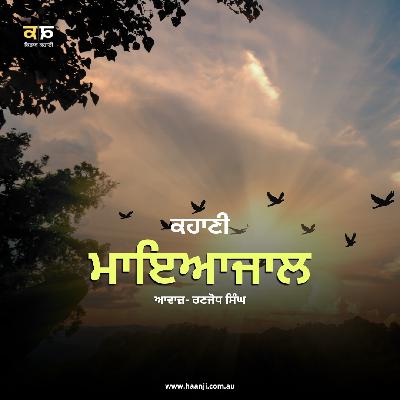Understanding Earth's Basic Geography: Continents, Oceans, Latitude, Longitude, and Time Zones Explained
Description
Have you ever wondered how pilots know exactly where to fly, or why your friend on the other side of the world is eating breakfast when you're going to bed? Our planet is a big, spinning ball covered mostly in water, with land divided into huge chunks we call continents. Figuring out where everything is—and why the clock says different times in different places—starts with some simple but amazing ideas. Let's dive in and make sense of it all together, like we're exploring a giant treasure map of Earth!
What Are Latitude and Longitude?
Imagine wrapping invisible lines around a basketball—that's basically what latitude and longitude are, but for Earth!
Latitude lines run east-west, like belts around the planet. The most famous one is the Equator, right in the middle at 0°. It splits the world into the Northern Hemisphere (above) and Southern Hemisphere (below). Lines north of the Equator go up to 90° at the North Pole, and south to 90° at the South Pole. These are also called "parallels" because they're parallel to each other.
Longitude lines run north-south, from pole to pole, like slices of an orange. The starting line is the Prime Meridian at 0°, which passes through Greenwich, England. Lines east or west go up to 180°.
Together, these lines create a grid—like coordinates on a video game map—that pinpoint any spot on Earth.
How Do Latitude and Longitude Help Us Find Places on Earth?
Think of your home address, but for the whole planet. Every location has a unique "address" made of latitude and longitude coordinates.
For example:
- New York City is about 40° N, 74° W.
- Sydney, Australia is around 34° S, 151° E.
GPS on your phone uses these exact coordinates (plus satellites) to guide you turn-by-turn. Sailors, pilots, and even hikers rely on them. Without latitude and longitude, we'd be lost—like trying to find a friend in a huge crowd without any directions!
Fun way to remember: Latitude is like ladder rungs (flat, horizontal). Longitude is long (tall, vertical).
Why Does the World Have Time Zones?
Ever notice the Sun rises in the east first? That's because Earth spins from west to east, completing one full turn every 24 hours.
If the whole world used the same time, noon (when the Sun is highest) would be midnight in some places! To fix this, we divide Earth into 24 time zones—one for each hour of the day. Each zone is about 15° of longitude wide (since 360° ÷ 24 = 15°).
When you travel east, you "gain" time (set your clock forward). West? You "lose" time (set it back). The International Date Line (near 180° longitude) is where the date changes—cross it going west, and you repeat a day!
Most countries stick close to their zone, but some tweak borders for convenience (like all of China using one time zone).
Key Takeaway: Time zones keep "noon" roughly when the Sun is overhead, no matter where you are.
What Is Daylight Saving Time and How Does It Work?
In many places, we "spring forward" one hour in March and "fall back" in November. Why?
The idea started over 100 years ago to make better use of daylight in summer. Longer evenings mean less electricity for lights. You "save" an hour of daylight by shifting it from morning to evening.
Not everyone does it—Hawaii, Arizona (mostly), and many countries skip it. In 2025, most of the US and Europe still observe it, but debates continue about making it permanent or ditching it altogether.
It can feel weird at first (hello, sleepy Mondays!), but your body adjusts in a few days.
Key Takeaway: Daylight saving shifts clock time to match longer summer days, giving extra evening light.
The Seven Continents: A Quick Tour
Earth has seven giant landmasses called continents. Here's a quick hello to each:
Continent
Size Rank
Fun Fact
Biggest Country
Asia
1 (largest)
Home to over half the world's people
China/Russia
Africa
2
Has the longest river (Nile)
Algeria
North America
3
Includes the Grand Canyon
Canada
South America
4
Amazon rainforest—lungs of the Earth
Brazil
Antarctica
5
Coldest, windiest, covered in ice
(No countries)
Europe
6
Many countries in a small space
Russia (part)
Australia
7 (smallest)
Only continent that's also a country
Australia
Sometimes people group Europe and Asia as "Eurasia," but we usually count seven.
Key Takeaway: Continents are Earth's big land families, each with unique animals, people, and landscapes.
The Five Oceans That Cover Our Planet
Oceans cover 71% of Earth—way more than land! There are five:
- Pacific Ocean – Biggest and deepest (has the Mariana Trench, deeper than Mount Everest is tall!).
- Atlantic Ocean – Second largest, separates the Americas from Europe/Africa.
- Indian Ocean – Warmest, mostly in the Southern Hemisphere.
- Southern Ocean – Cold waters around Antarctica (officially named in 2021!).
- Arctic Ocean – Smallest and coldest, mostly frozen, around the North Pole.
All oceans connect—sail far enough and you can circle the globe without touching land (almost!).
Key Takeaway: One big "world ocean" divided into five named parts that move heat, weather, and life around the planet.
Fun Facts About Earth's Geography
- The Earth is not perfectly round—it's a bit squished at the poles!
- Mount Everest (Asia) is tallest above sea level, but Mauna Kea (Pacific) is taller from base to tip.
- There are over 200 countries, but only seven continents.
- The Prime Meridian and Equator cross in the Atlantic Ocean off Africa—no land there!
Which fact surprised you most? Share in the comments—I'd love to hear!
What questions do you still have about our amazing planet? Drop them below, or share this with a friend who loves maps. Ready for more adventures? Explore related stories on world cultures or space next!
Frequently Asked Questions
What are the 7 continents and 5 oceans?
The 7 continents are Asia, Africa, North America, South America, Antarctica, Europe, and Australia. The 5 oceans are Pacific, Atlantic, Indian, Southern, and Arctic.
How do latitude and longitude work?
Latitude measures north-south from the Equator (0°) to the poles (90°). Longitude measures east-west from the Prime Meridian (0°) to 180°.
Why do we have time zones?
Earth rotates 15° per hour, so time zones keep local "noon" when the Sun is highest overhead.
What is daylight saving time?
We move clocks forward 1 hour in spring for more evening daylight in summer, then back in fall.
How many time zones are there?
24 main ones, but some countries use half-hour or quarter-hour offsets.
Where is the Equator?
It circles the middle of Earth at 0° latitude, passing through countries like Ecuador, Brazil, and Indonesia.
Which ocean is the largest?
The Pacific—it's bigger than all the land on Earth combined!
Click here to Download Radio Haanji App to discover other episodes of The Deep Talk






















